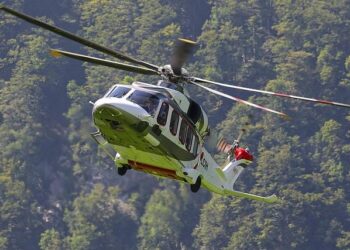Recent reports of black bear sightings in our region have captured the attention of local residents and authorities alike. As these encounters become more frequent, questions arise about how to respond safely and responsibly when faced with a black bear in the wild or near residential areas. This article provides essential guidance on what to do if you encounter a black bear, drawing on expert advice and official recommendations to help keep you and your community safe.
Black Bear Sightings Raise Awareness in Local Communities
Residents in our region have reported an increase in black bear sightings, prompting local authorities to emphasize the importance of safety and awareness. Experts advise that if you encounter a black bear, the best course of action is to remain calm and avoid sudden movements. Do not run, as this may trigger a chase response. Instead, stand tall, speak in a firm voice, and slowly back away while keeping the bear in sight. Carrying bear spray in known bear habitats can offer an added layer of protection and deter aggressive behavior.
To help residents stay prepared, here are key tips to remember during an encounter:
- Do not approach or feed the bear.
- Secure garbage and food sources to avoid attracting bears.
- Make yourself appear larger by raising your arms or opening your jacket.
- Report sightings to local wildlife officials promptly.
| Situation | Recommended Action |
|---|---|
| Bear at a distance | Observe quietly, do not approach. |
| Bear approaches | Stand firm, speak calmly, back away slowly. |
| Bear charges | Use bear spray, prepare to protect yourself. |
Understanding Black Bear Behavior to Stay Safe During Encounters
Black bears are generally shy creatures that prefer to avoid human contact. However, understanding their typical behaviors can be crucial for maintaining safety during unexpected encounters. These animals are most active during dawn and dusk, often foraging near wooded areas or streams. When a bear notices a human, it may stand on its hind legs to get a better look or sniff the air, but this is typically a sign of curiosity rather than aggression. Signs of agitation include huffing, jaw popping, or mock charging-behaviors meant to warn without escalating to an attack. Recognizing these subtle cues helps people stay alert and respond appropriately.
Experts recommend that if you encounter a black bear, you should:
- Remain calm and avoid sudden movements.
- Speak softly to let the bear know you are human, not prey.
- Back away slowly without turning your back on the bear.
- Do not run, as this may trigger the bear’s chase instinct.
- Make yourself appear larger by raising your arms or standing on a rock.
| Behavior | Meaning | Recommended Action |
|---|---|---|
| Standing Upright | Curiosity or assessing threat | Stay calm, show presence calmly |
| Huffing/Jaw Popping | Warning or irritation | Slowly back away, avoid eye contact |
| Mock Charge | Defense mechanism, bluff | Hold ground, do not run |
Essential Safety Tips for Residents and Visitors in Bear Country
Encounters with black bears can be startling, but understanding how to react greatly reduces risk. Always make your presence known by talking calmly or clapping your hands when hiking or walking in bear habitats-this helps prevent surprising a bear. If you come across a bear, do not run; instead, stand your ground, back away slowly, and avoid direct eye contact to appear non-threatening. Never approach a bear, especially if it has cubs, and secure all food and garbage to minimize attractants around campsites and residential areas.
In addition to these precautions, here are key actions to keep in mind:
- Carry bear spray and know how to use it effectively in emergency situations.
- Travel in groups whenever possible, as bears are less likely to approach multiple people.
- Store food properly in bear-resistant containers or vehicles when camping.
- Report all sightings to local wildlife authorities to help monitor bear activity in the region.
| Common Bear Behavior | Recommended Response |
|---|---|
| Bear stands on hind legs | Stay calm; this is typically curiosity, not aggression |
| Bear huffs, clicks teeth, or pops jaws | Slowly back away; do not turn your back or run |
| Bear charges | Use bear spray if available and prepare to defend yourself |
To Wrap It Up
As black bear sightings continue to be reported in our region, it is crucial for residents and visitors alike to stay informed and exercise caution. Understanding how to respond safely can help prevent dangerous encounters and protect both people and wildlife. Stay tuned to the Zanesville Times Recorder for the latest updates and expert advice on navigating these unexpected visitors in our community.















